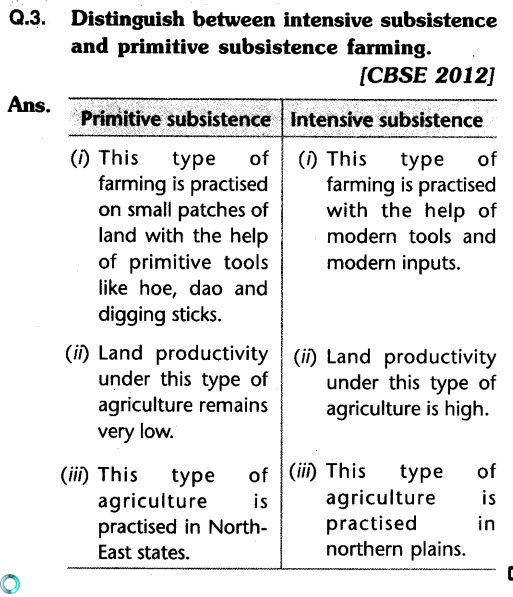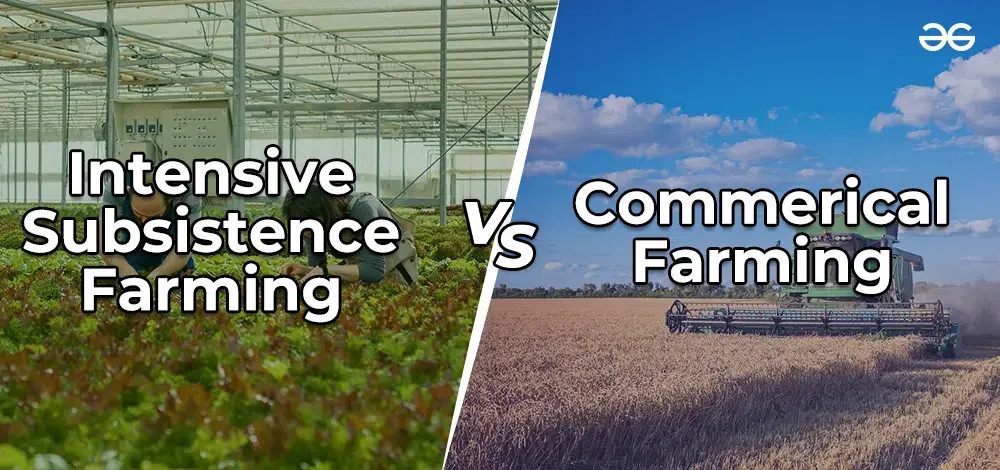The Duty of Modern Technology in Commercial Farming vs Subsistence Farming Approaches
An In-Depth Check Out the Challenges and Benefits of Modern Farming
Modern farming stands at the crossroads of development and sustainability, offering a wide range of obstacles and opportunities. With innovations like accuracy farming and biotechnology encouraging enhanced performance, the sector at the same time comes to grips with vital issues such as ecological deterioration and socio-economic disparities. As we check out the detailed equilibrium in between technical progression and its broader influences, the question arises: can we accomplish a lasting future that benefits both the environment and farming areas? The path forward requires a mindful exam of these dynamics, inviting stakeholders to take into consideration the possibility for transformative adjustment in agricultural methods and policies.
Technical Improvements in Farming
Technological improvements in farming have actually changed the farming market, driving boosted efficiency and effectiveness. Innovations such as accuracy farming, automation, and biotechnology have changed conventional farming techniques, enabling for even more sustainable and rewarding operations. Precision agriculture uses GPS technology, sensing units, and information analytics to maximize field-level management pertaining to crop farming. This approach allows farmers to use inputs like water, fertilizers, and chemicals more carefully, reducing waste and reducing expenses while boosting yields.
Automation in farming has actually further driven the industry ahead, with the introduction of autonomous tractors, drones, and robotics. These innovations lessen labor needs and boost functional rate, permitting for prompt growing and harvesting. Drones, in certain, provide valuable airborne images and information, helping farmers in keeping track of crop health and finding problems early.
Biotechnology has additionally played an essential function in progressing farming methods. Collectively, these technical improvements have laid the foundation for a much more sustainable and resilient agricultural future.
Ecological Obstacles
Agriculture encounters several ecological challenges that intimidate its sustainability and efficiency. Among the main problems is the degradation of dirt health and wellness as a result of intensive farming techniques that deplete essential nutrients and cause disintegration. The overuse of chemical fertilizers and chemicals further worsens this issue, polluting water resources and minimizing biodiversity. Consequently, the long-term feasibility of agricultural land is endangered, necessitating the fostering of even more sustainable methods.
Water scarcity is another considerable obstacle, specifically in regions where farming greatly relies upon irrigation. Climate modification is magnifying this problem, altering rainfall patterns and boosting the frequency of droughts. Effective water monitoring systems, such as drip watering and rainwater harvesting, are essential to alleviate these impacts, yet their execution continues to be irregular throughout various regions.
Furthermore, agriculture is both a contributor and a target to environment adjustment. It makes up a significant share of greenhouse gas exhausts, largely from animals manufacturing and rice farming. Transitioning to low-emission agricultural methods, such as precision farming and agroforestry, can help in reducing this influence. Nonetheless, these approaches call for substantial investment and technological expertise, posturing an obstacle to extensive adoption. Attending to these environmental obstacles is crucial for making sure a sustainable farming future.

Financial Influences
The financial influences of modern agriculture are extensive and complex, influencing both regional and global markets. Developments in modern technology and production methods have substantially raised farming efficiency, leading to extra efficient food supply chains and decreased expenses for consumers.
Nevertheless, these advantages are not without obstacles. The capital-intensive nature of contemporary farming requires considerable investment in machinery, plant foods, and genetically changed seeds, which can be economically challenging for small farmers. This frequently results in enhanced financial obligation and monetary vulnerability, potentially leading to the debt consolidation of ranches and the loss of country source of incomes. Furthermore, worldwide market changes can impact the earnings of farming exports, making economic climates reliant on agriculture vulnerable to economic instability.
Moreover, aids and profession plans in industrialized countries can distort market prices, influencing competitive equilibrium and potentially disadvantaging farmers in establishing countries. Generally, while modern farming drives economic growth, it additionally requires browsing intricate monetary landscapes to make certain sustainable and equitable growth.
Social Ramifications
While modern-day farming has actually brought about considerable advancements, it additionally presents different social effects that require factor to consider. One major worry is the variation of small-scale farmers because of the increase of huge agribusinesses. As company farming entities increasingly control the farming landscape, smaller sized farms click here to find out more usually struggle to complete, resulting in the disintegration of country areas and traditional farming methods. This change can lead to a loss of neighborhood knowledge and cultural heritage that smaller farms sustain.

Additionally, there are issues about food safety and security and sovereignty. The focus on monoculture and genetically modified plants can threaten biodiversity and make food systems a lot more prone to illness and pests. Such practices may additionally restrict customer selections and lower the capacity of local communities to manage their food resources. As these social effects unfold, it becomes vital to address them to guarantee sustainable and fair farming growth.
Future Instructions
Looking ahead, numerous promising methods for contemporary agriculture can attend to the challenges encountered today while fostering lasting development. Breakthroughs in modern technology, such as accuracy farming, provide the potential to enhance source usage and boost effectiveness.
Biotechnology also holds immense guarantee for the future of agriculture. Genetically customized microorganisms (GMOs) and gene editing and enhancing techniques, like CRISPR, can enhance crop strength against climate change, pests, and conditions, thus enhancing food security. Expanding plant selections to consist of even more climate-resilient and nutrient-dense alternatives could boost both eco-friendly stability and human nutrition.

Conclusion
Modern agriculture, defined by technical innovations, offers both possibilities and obstacles. commercial farming vs subsistence farming. Resolving these complexities calls for a shift in the direction of lasting practices that stabilize productivity with ecological stewardship and social equity, thereby making sure a resistant future for global agricultural systems.
Modern agriculture stands at the crossroads of development and sustainability, presenting a multitude of difficulties and opportunities. In addition, international market web changes can influence you can find out more the earnings of farming exports, making economic situations reliant on farming prone to economic instability.
Moreover, the intensive use of modern technology and automation in farming has actually led to a decrease in farming work opportunities.Looking ahead, a number of promising avenues for modern-day farming can deal with the difficulties dealt with today while fostering lasting growth. commercial farming vs subsistence farming.Modern farming, defined by technological advancements, offers both chances and challenges